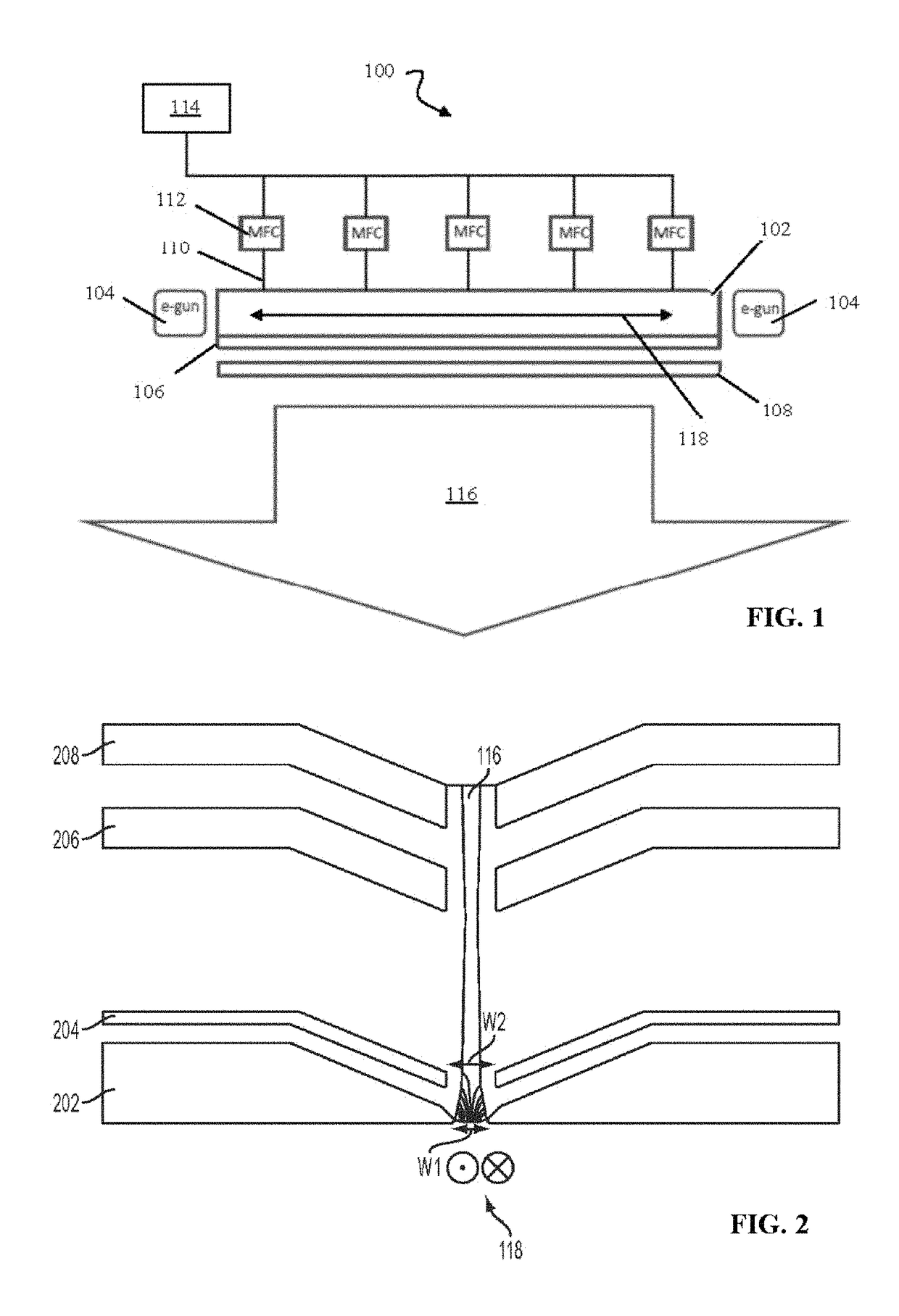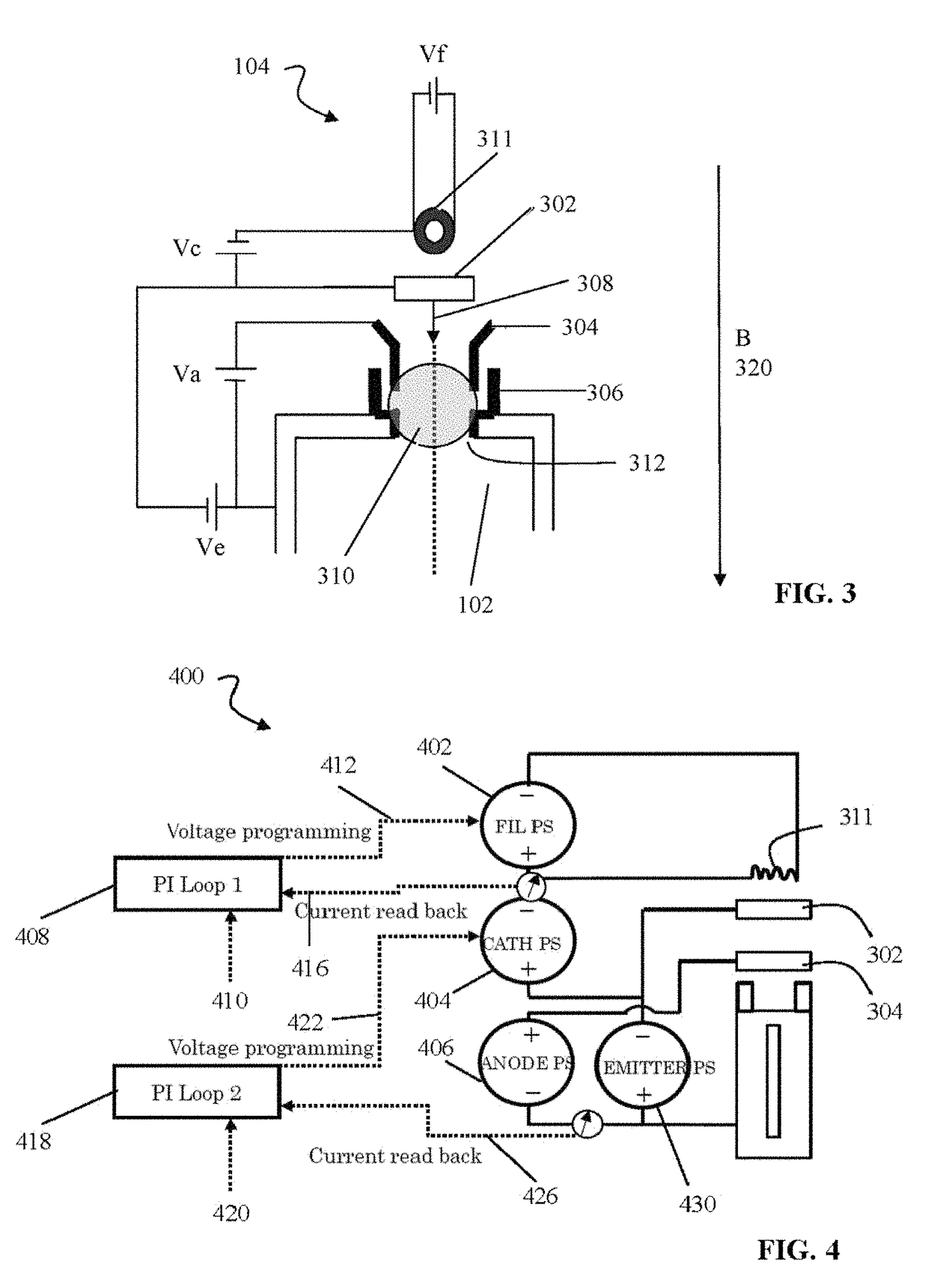Plasma generator with at least one non-metallic component
a generator and non-metallic technology, applied in the field of plasma generators, can solve the problems of limiting the use of beam profile correction optics, difficult to achieve uniformity in practice, and insufficient use of corrector optics to achieve good beam uniformity, etc., to achieve little or no contaminants, reduce metal contamination levels introduced into workpieces, and little or no contaminants.
- Summary
- Abstract
- Description
- Claims
- Application Information
AI Technical Summary
Benefits of technology
Problems solved by technology
Method used
Image
Examples
Embodiment Construction
[0062]FIG. 1 shows a schematic diagram of an exemplary ion source, according to embodiments of the present invention. The ion source 100 can be configured to produce an ion beam for transport to an ion implantation chamber that implants the ion beam into, for example, a semiconductor wafer. As shown, the ion source 100 includes an ionization chamber 102 defining a longitudinal axis 118 along the long dimension of the ionization chamber 102, a pair of electron guns 104, a plasma electrode 106, a puller electrode 108, a gas delivery system comprising a plurality of gas inlets 110 and a plurality of mass flow controllers (MFCs) 112, a gas source 114, and a resultant ion beam 116. In operation, gaseous material from the gas source 114 is introduced into the ionization chamber 102 via the gas inlets 110. The gas flow through each of the gas inlets 110 can be controlled by the respective mass flow controllers 112 coupled to the inlets 110. In the ionization chamber 102, a primary plasma f...
PUM
| Property | Measurement | Unit |
|---|---|---|
| length | aaaaa | aaaaa |
| length | aaaaa | aaaaa |
| source voltage | aaaaa | aaaaa |
Abstract
Description
Claims
Application Information
 Login to View More
Login to View More - R&D
- Intellectual Property
- Life Sciences
- Materials
- Tech Scout
- Unparalleled Data Quality
- Higher Quality Content
- 60% Fewer Hallucinations
Browse by: Latest US Patents, China's latest patents, Technical Efficacy Thesaurus, Application Domain, Technology Topic, Popular Technical Reports.
© 2025 PatSnap. All rights reserved.Legal|Privacy policy|Modern Slavery Act Transparency Statement|Sitemap|About US| Contact US: help@patsnap.com



